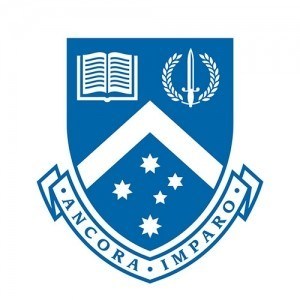Photos of university / #monash_uni
Design and Information Technology at Monash University offers students a comprehensive and innovative education that combines the principles of visual communication, digital design, user experience, and technology development. This multidisciplinary program equips students with the skills necessary to succeed in today's rapidly evolving digital landscape, focusing on creativity, problem-solving, and technical expertise. Throughout the course, students explore a broad range of topics including graphic design, interaction design, web development, data visualization, and information systems. The curriculum emphasizes both theoretical understanding and practical application, ensuring graduates are well-prepared to address real-world challenges in various industries such as media, advertising, technology, and business. Students have access to state-of-the-art facilities, industry-standard software, and collaborative learning environments that foster innovation and hands-on experience. The program also offers opportunities for internships, industry projects, and international exchanges, enabling students to build valuable professional networks and gain insights into global design and technology trends. Emphasizing critical thinking and adaptive skills, the program encourages students to explore new media and emerging technologies, ensuring they stay ahead in a competitive job market. Graduates of the Design and Information Technology program at Monash University are equipped to pursue diverse careers including digital designer, user experience designer, web developer, information analyst, and digital strategist. The program’s flexible structure allows students to tailor their studies according to their interests and career goals through elective courses and specialization options. With a strong focus on innovation, sustainability, and ethical considerations in technology and design, the program prepares students to become responsible professionals who can contribute creatively and ethically to society. Upon completion, graduates will possess a robust portfolio of work, advanced technical skills, and strategic thinking abilities, making them valuable assets to organizations looking to leverage design and technology for growth and success.
Program Overview
The Bachelor of Design and Information Technology at Monash University offers a comprehensive educational experience that combines the creative aspects of design with the technical skills of information technology. This innovative program is designed to equip students with a unique blend of knowledge and practical abilities necessary to thrive in a rapidly evolving digital and design-driven world. The curriculum focuses on developing proficiency in user-centered design, digital media, web development, programming, human-computer interaction, and data management, enabling graduates to create compelling and functional digital solutions across various industries.
Throughout the course, students will engage in a variety of hands-on projects, collaborative activities, and real-world problem-solving exercises that foster creativity, innovation, and critical thinking. The program emphasizes the importance of understanding user needs, aesthetic principles, and technological capabilities to produce effective and aesthetically pleasing digital content and interfaces. Students will have access to state-of-the-art facilities and software, allowing them to experiment with the latest design tools and programming languages.
The program also emphasizes interdisciplinary learning, encouraging students to explore topics such as digital storytelling, information architecture, mobile app development, and interactive media. This holistic approach prepares graduates to operate effectively in multidisciplinary teams, communicate ideas clearly, and adapt to new technological advancements. Industry placements and internships are integrated into the course structure, providing valuable opportunities to gain practical experience, build professional connections, and enhance employability.
Graduates of the Bachelor of Design and Information Technology will be well-equipped for careers in web and app development, digital design, user experience (UX) and user interface (UI) design, multimedia production, and technology consulting. They will be prepared to take on roles that require innovative thinking, technical expertise, and a keen understanding of digital trends. With a curriculum designed to foster lifelong learning and adaptability, this program aims to develop versatile professionals capable of leading digital transformation in a variety of sectors.
By combining creative design principles with cutting-edge information technology skills, the Bachelor of Design and Information Technology at Monash University provides students with a distinctive education that opens doors to diverse career opportunities in the digital age, ensuring they are ready to meet future industry challenges with confidence and expertise.
Program requirements for the Bachelor of Design and Information Technology at Monash University typically include completing core courses that cover fundamental concepts in design principles, human-computer interaction, and information technology systems. Students must also undertake a set of elective courses to tailor their education toward their specific interests within the field. The curriculum emphasizes hands-on projects, teamwork, and industry engagement to develop practical skills alongside theoretical knowledge. To graduate, students are usually required to achieve a minimum of 144 credit points over the duration of the program, which is generally structured to be completed in three years of full-time study. Prerequisites for entry often include completion of secondary education with certain English language proficiency scores, and some knowledge of mathematics or computer science may be advantageous. The program encourages students to develop critical thinking, problem-solving, and creative skills that are essential for careers in design, technology, and innovation sectors. Additionally, students may have opportunities for work placements, internships, or collaborative projects with industry partners, enhancing employability and real-world experience. Some students might also participate in study abroad programs or exchanges to gain international exposure. To succeed in this program, students are expected to engage actively with coursework, participate in seminars and workshops, and complete assessments that include written reports, presentations, and practical projects. The comprehensive curriculum aims to prepare graduates for a diverse range of roles such as user experience designer, digital developer, interaction designer, and IT consultant. Throughout the program, students are supported by dedicated faculty members and industry mentors, ensuring they acquire both technical expertise and professional skills necessary to thrive in the evolving digital landscape.
Financial aspects of the Design and Information Technology program at Monash University encompass a range of cost factors that prospective students need to consider. Tuition fees vary depending on whether students are domestic or international enrollees, with international students typically paying higher fees. For undergraduate programs, domestic students might expect annual tuition fees in the vicinity of AUD 10,000 to AUD 15,000, whereas international students could be paying approximately AUD 35,000 to AUD 45,000 per year. These fees cover academic instruction, access to facilities, and learning resources.
In addition to tuition, students should account for compulsory student services and amenities fees, which may amount to a few thousand AUD annually, supporting campus facilities, health services, and extracurricular activities. Living expenses constitute a significant portion of total study costs; students generally budget between AUD 20,000 and AUD 30,000 per year for accommodation, food, transportation, textbooks, and personal expenses, depending on the city and lifestyle choices.
Monash University offers various financial aid options to assist students. Domestic students might be eligible for government support schemes such as HECS-HELP, which allows deferment of tuition payments through the Higher Education Loan Program. Scholarships are available based on merit, need, or specific criteria such as geographic origin or field of study, providing financial relief that can significantly reduce overall costs. International students are typically not eligible for government assistance but may access university scholarships, which require competitive applications and demonstrate academic excellence.
Part-time work opportunities are available on and near campus, enabling students to supplement their income during their studies. Many students engage in flexible employment, especially in the hospitality, retail, and administrative sectors, to help cover living expenses.
Payment plans, including installment options for tuition fees, are often available to alleviate financial pressure. It is advisable for students to carefully plan their finances prior to commencing studies, considering all direct and indirect costs and exploring available financial aid and scholarship opportunities. Further details regarding fees, financial assistance, and scholarship information can be obtained directly from Monash University's official website or through the university’s financial aid office.
Design and Information Technology at Monash University offers a comprehensive curriculum that integrates principles of design, technology, and innovation. The program aims to equip students with both creative and technical skills necessary to develop innovative solutions for a range of industries. Students will engage in coursework that covers graphic design, user experience, interface design, digital media, and information systems, fostering a multidisciplinary approach to problem-solving. The program emphasizes practical experience through projects, internships, and collaborations with industry partners, allowing students to apply theoretical knowledge in real-world contexts. Graduates will be prepared for careers in digital design, user interface and experience design, information systems management, and technology-driven entrepreneurship. The program adheres to the latest developments in design thinking, human-computer interaction, and emerging digital technologies, ensuring students are well-equipped to meet current and future industry demands. Core modules include design fundamentals, digital media production, data visualization, programming, and project management. Advanced topics may include artificial intelligence in design, virtual reality, and cybersecurity aspects related to information technology. The program also focuses on fostering critical thinking, innovation, and sustainable design practices. Students will benefit from state-of-the-art facilities, expert faculty, and a dynamic learning environment designed to inspire creativity and technical expertise. International perspectives are integrated throughout the curriculum, offering global insights into design and technology trends. Graduates will have the opportunity to pursue further studies or enter various sectors including tech startups, creative agencies, consulting firms, and corporate IT departments. Constant curriculum updates ensure alignment with evolving industry standards and technological advancements, providing students with relevant and up-to-date skills necessary for impactful careers in design and information technology.










